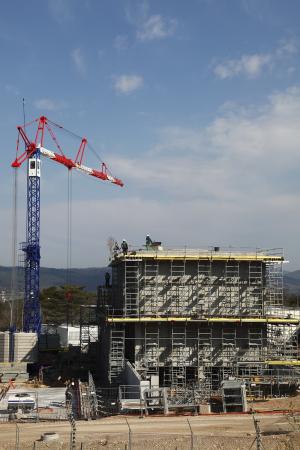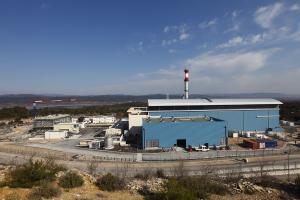"Topping out" RES cooling towers
The development of nuclear propulsion reactors for the French Navy was one of the main reasons why CEA-Cadarache was established in 1959. Half a century later, it's the fourth generation of nuclear boilers that is being developed there.
Work on the Nuclear Propulsion Test Reactor (RES) began in the mid-1990s and should be complete by 2012. A research installation more than an actual prototype, RES will act as support for the French nuclear fleet and contribute to the training of their officers. It will also test new fuels and new core architectures, validate computational models and simulations, and qualify new concepts.
In July 2005, the reactor's 820-tonne containment system was assembled on site and moved into the reactor building, using 36-wheel transport platform similar to the ones that will deliver the largest ITER components to the ITER site. Less than two years later, the reactor vessel was inserted into the containment system.



